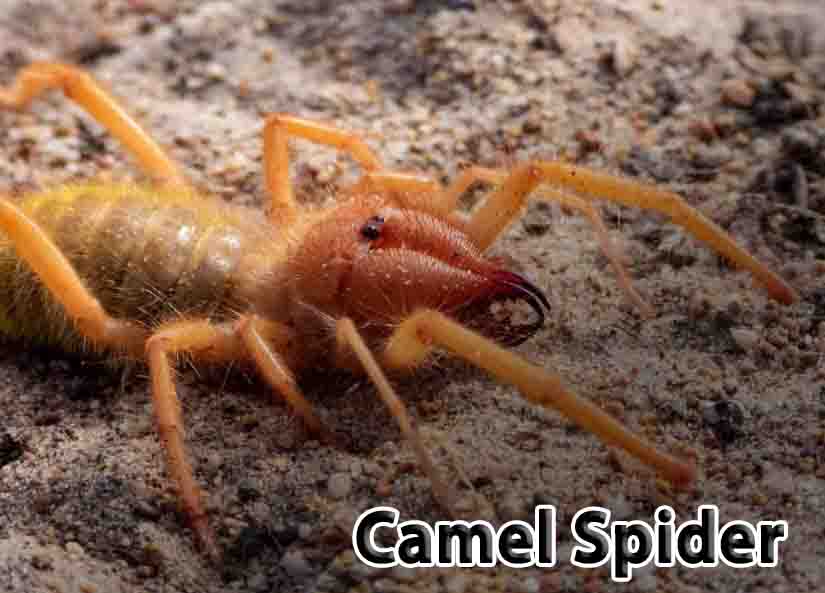The Basics
A large number of species in the Solifugae order are known as camel spiders. These creatures, which are also known as wind scorpions or sun spiders, are neither scorpions nor spiders. Although they belong to the Class Arachnida, they exhibit both scorpion and spider characteristics.
The camel spider has a distinctly segmented opisthosoma, like scorpions. In contrast, its tail does not have a stinger and is not elongated. The pedipalps (foremost appendages) of the camel spider are used to search for and manipulate prey items. Like all arachnids, camel spiders have eight legs, but their pedipalps are so large that they appear to have ten legs.
Camels spiders have much larger chelicerae than most arachnids, although they do not contain venom. This powerful appendage is used to cut and tear their prey into small pieces, which are then liquified and swallowed. Camels spiders have powerful chelicerae that can bite through human skin, making them dangerous to handle.
Despite their reputation on the internet, they are not nearly as dangerous or scary as they appear.
Common Camel Spider Myths Debunked
Prior to the early 2000s, most people didn’t know much about camel spiders. There are several species of camel spiders in most areas of the world, but until soldiers fighting in the Middle East began sending back manipulated pictures of “giant” camel spiders, this small predator was relatively unknown despite the fact that the order Solifugae is widely distributed across the globe.
It appeared that these arachnids were several feet in diameter because they were held closer to the camera.
Despite their size, camel spiders are almost entirely harmless to humans. They sometimes pursue or prey on camels and humans in the desert by following the shadows of larger animals. This is simply not true.
Some myths about camel spiders include them being poisonous, dangerous, extremely large, aggressive, or extremely fast. There are few insects as fast or as dangerous as the camel spider, in comparison to other insects. Most people had no idea that camel spiders existed until internet rumors and doctored pictures spread.
Interesting Insights from the Camel Spider!
While the camel spider has been haunting people’s nightmares for the past decade or so, it was relatively unknown before then. Despite its monstrous appearance, the camel spider exhibits the following biological concepts perfectly!
Chelicerae + Pedipalps
Chelicerae and pedipalps are two of the arachnid’s unique appendages that are easily seen on camel spiders. Chelicerae are pinching appendages, equipped with sharp articles containing tiny teeth.
Prey items can be grabbed, ripped, and cut by these pinchers. Camel spiders have chelicerae that are far more powerful than scorpions, despite their longer chelicerae. By rubbing stiff parts of the chelicerae together, camel spiders can create a hissing or chattering sound.
Similarly to spiders and scorpions, Solifugae members also have pedipalps, which have no purpose other than to help them walk. They are used exclusively to locate, capture, and manipulate prey. Camel spiders have pedipalps covered in small hairs that allow them to detect everything they touch.
Fear of Arachnids
Many primate species, not just humans, have an inherent fear of arachnids. Species that may be dangerous to animals evolve to fear or avoid them. Animals must generalize, however, what features they use to identify dangerous species in an environment where millions of species exist. Since some eight-legged species can harm humans, most humans retain a fear of all crawling insects.
Although this fear is irrational when it comes to the camel spider, it is nonetheless ingrained in many cultures and populations. Although this evolutionary fear may have helped our ancestors survive and reproduce in ancient times, modern science has made it easier to identify dangerous species.
In the same way that cats react to cucumbers as if they were snakes, most people are scared of insects, arachnids, and other arthropods for evolutionary reasons. Camels spiders are not a threat once you get to know them; they are actually amazing species with incredible adaptations.

